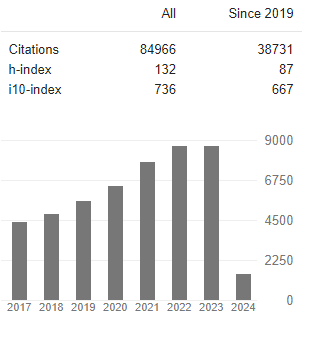Prevalence of Intestinal Parasitic Infection and Associated Factors among Adama Science and Technology University Student Adama Town, Oromia, Ethiopia
Abstract
Legese Lemma Zeme, Kebebush Kitesa, Girma Mulisa, Chala Diriba Feyisa
Introduction: University students who live together in campuses and share different materials for their day-to-day activities may expose them to intestinal parasitic infections. As far as our knowledge is concerned, there is insufficient information on the magnitude of parasitic infections among students at Adama Science and Technology University
Objectives: To determine Prevalence of intestinal parasitic infection and associated factors among Adama University Student Adama Town, Oromia, Ethiopia.
Methods: A cross sectional study was conducted among 483 students attending higher health center at Adama University Student by using systematic random sampling technique. Data on socio-demographic characteristics and potential associated factors for Intestinal parasitic infection was collected by structured interviewer administered questionnaire. One-gram stool samples for direct saline microscopy was collected and processed in accordance to the standard parasitological techniques and procedures at Adama Science and Technology University Higher Health Center Laboratory. Data entry and analysis was done using SPSS version 20.0.Chi- square test and multiple logistic regression was used to identify associated factors. Association between variables were considered statistically significant only if a two-sided P-value <0.05 at 95% confidence level. Results: This study demonstrates the overall prevalence of intestinal parasite among student accounts 20.1% (95%CI; 16.8, 23.8). Two protozoa and three helminthes spp were detected from total stool sample examined. The predominate parasite isolated were E.histolotica 63(13.0%) followed by G.lamblia 27(5.6%), Taenia spp 3(0.6%), Hookworm 2(0.4%) and H.nana 2(0.4%) respectively. being rural residence[AOR]: 2.69, 95% CI: (1.22,5.9)], lower parental educational status(illiterate [AOR]: 5.5, 95% CI: (1.99,15.5)] and primary[AOR]: 3.75, 95% CI: (1.5,9.34)], food source from private cafeterias[AOR]: 2.46, 95% CI: (1.15,5.2)], not hand washing before food and after defecation[AOR]: 4.9, 95% CI: (1.96,12.3)], Habit of eating raw vegetables and fruit[AOR]: 4.8, 95% CI:(2.28,10.1)], walking with bare foot[AOR]: 13.2, 95% CI: (5.4,32.4)], not trimming finger nail [AOR]: 6.85, 95% CI: (3.2,14.6)] and not using soap [AOR]: 7.53, 95% CI: (3.2,17.8)]were significantly associated with parasitic infection.
Conclusions and Recommendations: The present study demonstrated the frequencies of intestinal parasitic infections among students were found to be high. Residence, educational status of parents, hand washing before meal and after defection, eating raw vegetables and fruit, walking with bare foot was significant predictors of parasitic infection: Hence all students should wash their hand before meal and after defecation, consume cooked vegetables, avoid walking with barefoot and trim their fingernail and university should improve and sustain inspection and food handler screening of private cafeterias.




